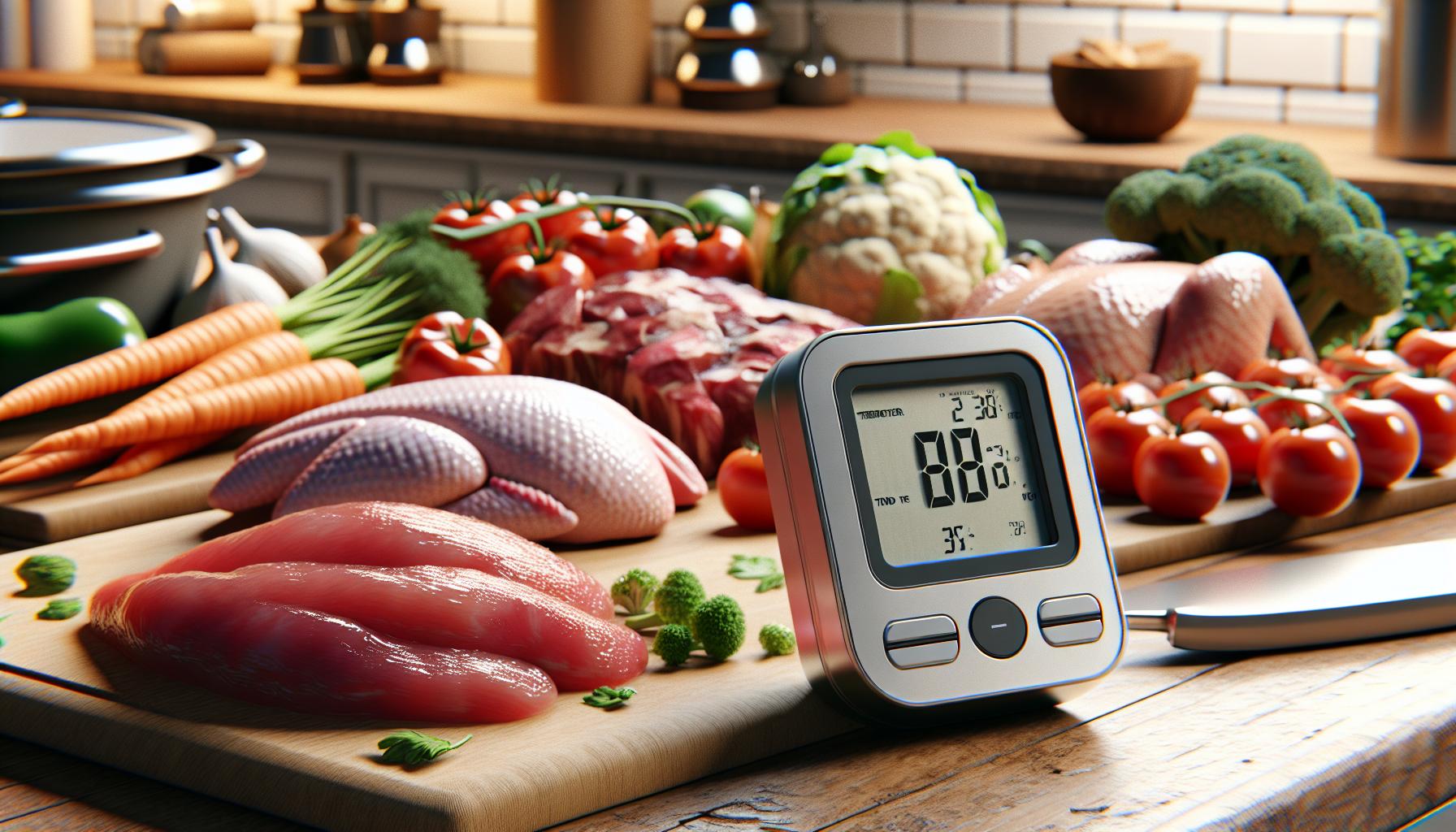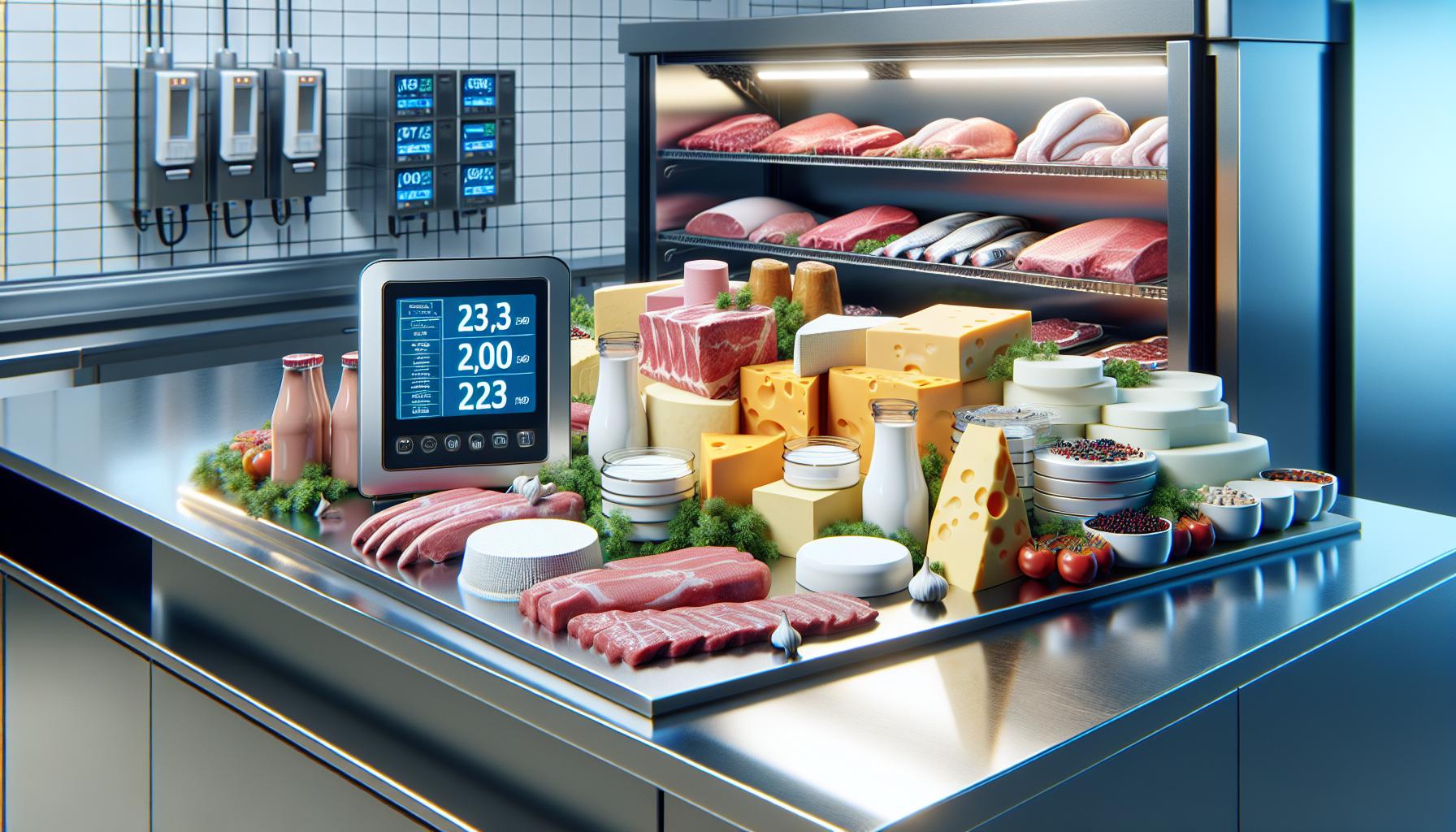Food safety isn’t just about keeping things clean – it’s a science that requires careful attention to specific characteristics that make certain foods more susceptible to bacterial growth. Understanding which characteristic would classify a food as time/temperature control for safety is crucial for anyone handling food, from professional chefs to home cooks.
Time and Temperature Control for Safety (TCS) foods demand special attention because they provide the perfect environment for harmful bacteria to multiply. These foods share certain traits that make them potential breeding grounds for foodborne illness. From protein-rich meats to dairy products and even some unexpected items like cut melons, knowing what makes a food TCS is essential for maintaining food safety standards.
Which Characteristic Would Classify a Food as Time/Temperature Control for Safety
Which characteristic would classify a food as time/temperature control for safety require strict temperature monitoring and time limitations to prevent foodborne illness. These foods contain characteristics that support rapid bacterial growth when exposed to improper temperature conditions.
Definition and Purpose
TCS foods contain high levels of protein moisture or carbohydrates that create ideal environments for bacterial proliferation. The FDA designates specific foods as TCS based on their pH levels acidity water activity nutrient content intrinsic factors. Common TCS foods include raw meats eggs dairy products cut leafy greens cooked rice sliced melons garlic oil mixtures. Temperature control requirements mandate keeping these foods at 41°F or below for cold items 135°F or above for hot items to inhibit pathogen growth.
Food Safety Risks
TCS foods harbor pathogens like Salmonella E. coli Listeria when stored at temperatures between 41°F-135°F known as the danger zone. Bacteria multiply rapidly doubling in number every 20 minutes under these conditions. Critical food safety risks include:
| Risk Factor | Impact |
|---|---|
| Time in Danger Zone | Bacterial growth doubles every 20 minutes |
| Cross-contamination | Spreads bacteria between raw prepared foods |
| Improper Storage | Allows toxin formation spoilage |
| Temperature Abuse | Accelerates microbial growth |
These foods require constant monitoring strict time temperature controls documentation of holding times frequent temperature checks to maintain safety standards.
Key Characteristics of TCS Foods

Time and Temperature Control for Safety (TCS) foods exhibit specific characteristics that make them susceptible to rapid bacterial growth. These characteristics determine whether a food item requires strict temperature control and time monitoring for safe consumption.
Moisture Content and Water Activity
Water activity (aw) measures the available moisture that supports microbial growth in food. Foods with water activity above 0.85 create ideal conditions for bacteria proliferation. Common high-moisture foods include:
- Fresh produce with 90-95% water content
- Raw meat containing 70-75% moisture
- Dairy products maintaining 80-85% water content
- Cooked pasta storing 65-70% moisture
Temperature fluctuations in these foods accelerate bacterial growth rates when moisture levels remain elevated.
pH Levels and Acidity
The pH scale measures food acidity from 0 to 14, with lower numbers indicating higher acidity. Foods within pH ranges of 4.6-7.5 support bacterial growth:
- Meat products: pH 5.6-6.2
- Seafood: pH 6.3-6.8
- Vegetables: pH 5.0-7.0
- Dairy items: pH 6.0-6.7
Bacterial growth accelerates in neutral pH environments between 6.0-7.0, making proper temperature control essential for these foods.
Protein Content
Protein-rich foods provide essential nutrients for bacterial multiplication. Foods containing high protein levels require strict temperature monitoring:
- Raw meats: 20-25g protein per 100g
- Fish: 18-22g protein per 100g
- Eggs: 12-13g protein per 100g
- Dairy products: 3-7g protein per 100g
Bacteria metabolize proteins rapidly at room temperature, creating toxic byproducts that cause foodborne illness.
Temperature Danger Zone

The temperature danger zone spans from 41°F to 135°F (5°C to 57°C), creating optimal conditions for bacterial growth in food. This range represents the critical temperatures where foodborne pathogens multiply rapidly, doubling in population every 20 minutes.
Optimal Growth Conditions for Bacteria
Bacteria thrive between 70°F and 125°F (21°C to 52°C), with peak multiplication occurring at 98.6°F (37°C). Food holding environments at these temperatures create ideal conditions for bacterial reproduction through:
- Moisture retention in foods
- Enhanced enzymatic activity
- Accelerated metabolic processes
- Increased cellular division rates
- Efficient nutrient absorption
| Temperature Point | Description | Safety Impact |
|---|---|---|
| Below 41°F (5°C) | Safe cold storage | Bacteria become dormant |
| 41°F (5°C) | Danger zone begins | Bacterial growth starts |
| 70°F (21°C) | Rapid growth starts | Significant risk increase |
| 125°F (52°C) | Maximum growth rate | Highest contamination risk |
| 135°F (57°C) | Danger zone ends | Most bacteria die off |
The bacteria survival rate decreases significantly above 135°F (57°C). Storing foods below 41°F (5°C) slows bacterial growth substantially. Temperature monitoring at 4-hour intervals ensures food remains outside dangerous temperature ranges. Recording temperature readings validates proper food storage practices.
Common Examples of TCS Foods

Time/Temperature Control for Safety foods encompass various categories that require strict monitoring due to their susceptibility to bacterial growth. These foods contain specific characteristics that create ideal conditions for pathogen multiplication.
Dairy Products
Dairy products rank among the most common TCS foods due to their high protein content and moisture levels. Raw milk contains natural bacteria that multiply rapidly at room temperature. Cheese products require refrigeration below 41°F to prevent bacterial growth, particularly soft varieties like ricotta brie cottage cheese. Yogurt cream buttermilk sour cream demand constant temperature monitoring to maintain safety standards. Ice cream presents unique risks when allowed to melt repeatedly, creating conditions for bacterial proliferation.
Meat and Poultry
Raw processed cooked meats demand rigorous temperature control throughout storage handling preparation. Ground meats pose elevated risks because bacteria spread throughout the product during grinding. Poultry items including chicken turkey duck require storage below 41°F to prevent Salmonella growth. Hot-held meats must maintain temperatures above 135°F to remain safe for consumption. Deli meats demand strict rotation schedules temperature monitoring to prevent Listeria contamination.
Seafood and Shellfish
Fresh seafood requires immediate temperature control to prevent rapid bacterial growth spoilage. Fish species like tuna salmon cod must stay below 41°F from harvest through preparation. Shellfish including oysters clams mussels demand specific temperature ranges to remain safe for consumption. Raw seafood presents particular risks for Vibrio bacteria contamination when temperature controls lapse. Cooked seafood items require proper cooling procedures to prevent bacterial growth during storage.
Proper Storage and Handling Requirements
Time/Temperature Control for Safety (TCS) foods require specific storage and handling protocols to prevent bacterial growth and ensure food safety. These requirements focus on maintaining proper temperatures and adhering to strict time limitations.
Temperature Monitoring
TCS foods stored in refrigeration units maintain temperatures at or below 41°F. Temperature logs document readings every 4 hours during operational periods. Digital thermometers measure internal food temperatures accurately within ±2°F. Cold holding units display external thermometers in visible locations for easy monitoring. Hot holding equipment maintains temperatures at or above 135°F with built-in temperature displays. Calibrated probe thermometers check internal temperatures of thick foods like meat roasts poultry. Food service establishments implement automated temperature monitoring systems with digital sensors alarms.
Time Limitations
TCS foods left at room temperature follow the 4-hour rule before requiring disposal. Ready-to-eat foods stay in the temperature danger zone for a maximum of 2 hours. Hot foods cool from 135°F to 70°F within 2 hours then to 41°F within 4 additional hours. Time markers track when foods exit temperature control. Date marking labels identify foods held longer than 24 hours under refrigeration. Foods prepared from ambient ingredients remain at room temperature for 4 hours maximum. Temperature logs record time intervals between monitoring checks. Prepared foods receive immediate refrigeration or hot holding when service ends.
Food Safety Management Systems
Food safety management systems provide structured approaches to control food safety hazards in food service operations. These systems incorporate preventive measures monitoring procedures to ensure TCS foods remain safe for consumption.
HACCP Principles
Hazard Analysis Critical Control Points (HACCP) identifies evaluates monitors critical control points in food preparation processes. The seven HACCP principles include:
- Conduct hazard analysis
- Identify critical control points
- Establish critical limits
- Monitor critical control points
- Take corrective actions
- Verify system effectiveness
- Document procedures results
Temperature monitoring serves as a key critical control point for TCS foods requiring documentation of readings at specific intervals. Critical limits for TCS foods include maintaining cold foods below 41°F hot foods above 135°F.
Record Keeping
Record keeping forms the foundation of effective food safety management by documenting critical temperature time controls. Essential records include:
- Temperature logs with readings taken every 4 hours
- Corrective action reports for temperature violations
- Equipment calibration records for thermometers
- Training documentation for food handlers
- Cleaning sanitation schedules
- Receiving logs for TCS food deliveries
Digital record keeping systems streamline documentation processes enable real-time monitoring generate automated alerts for temperature violations. Temperature monitoring devices with data logging capabilities create permanent records for regulatory compliance verification.
Maintaining Food Safety
Understanding which characteristic would classify a food as time/temperature control for safety is crucial for maintaining food safety in any food service operation. Proper monitoring of temperature pH levels moisture content and protein composition helps prevent dangerous bacterial growth and foodborne illnesses. By implementing comprehensive food safety management systems and maintaining detailed records food service professionals can effectively control these critical factors.
Food handlers must remain vigilant in monitoring TCS foods particularly within the danger zone. Through strict adherence to temperature controls and time limitations they’ll protect their customers while maintaining compliance with food safety regulations. This knowledge isn’t just about following rules – it’s about safeguarding public health and maintaining the highest standards in food service operations.



